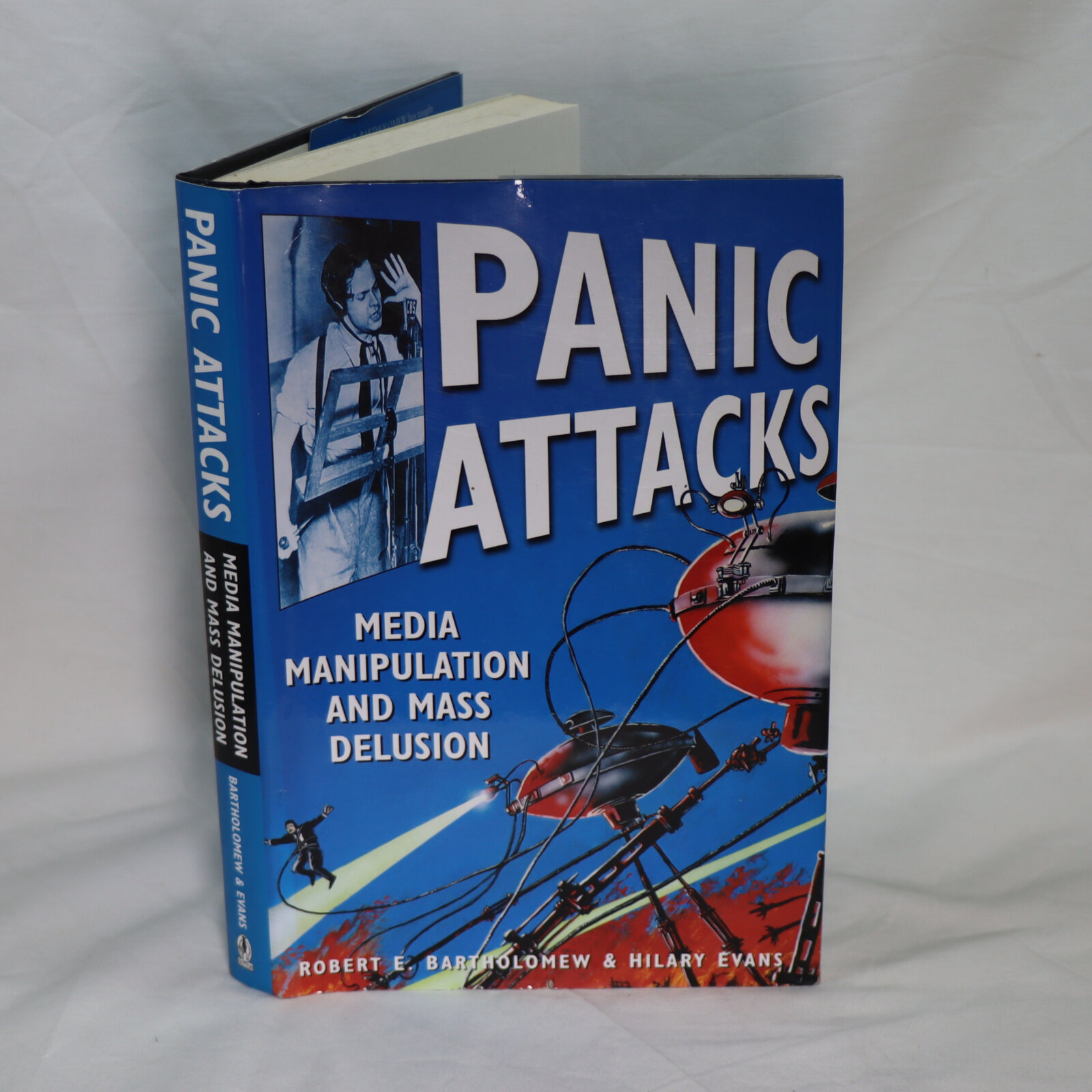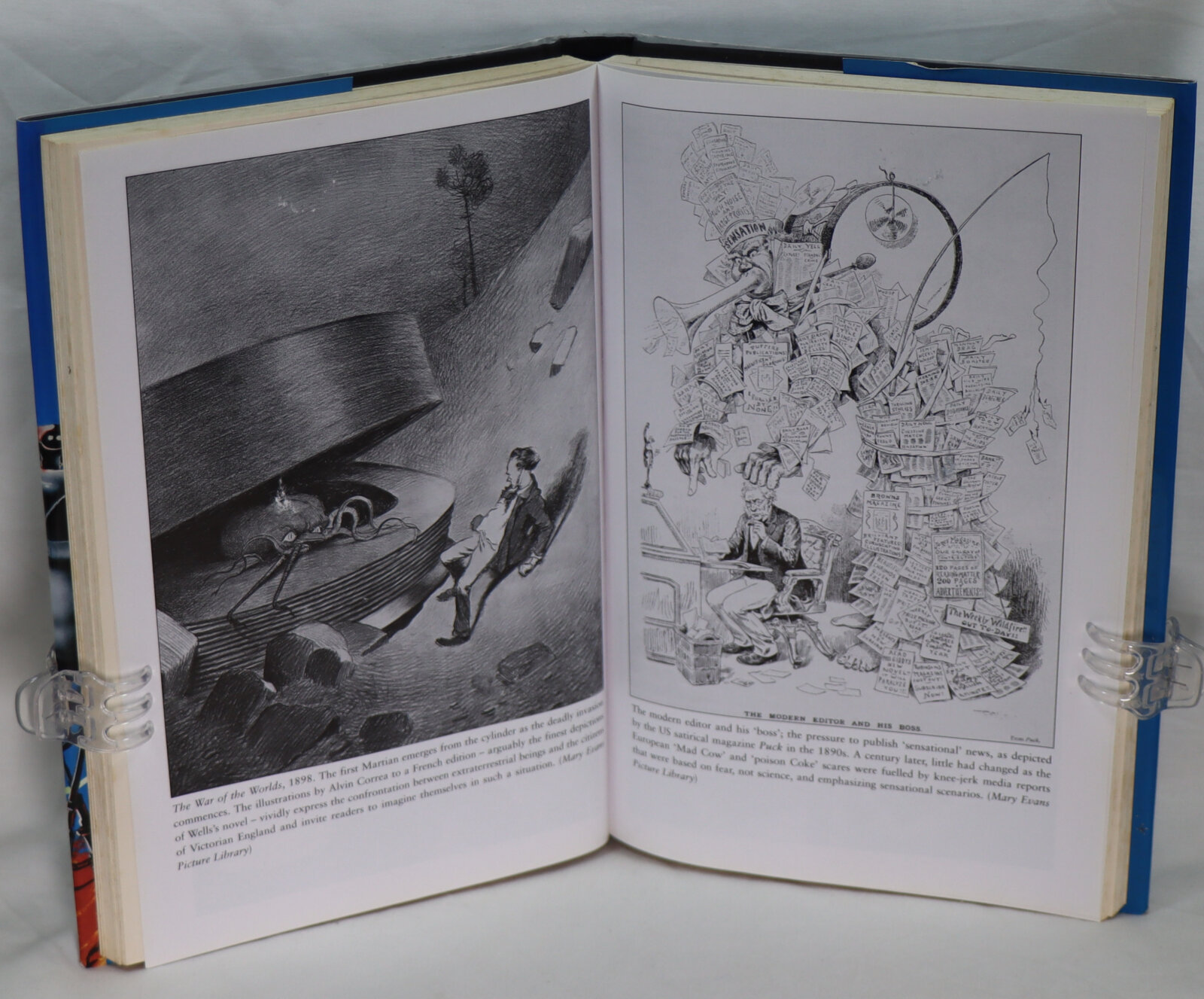The search for your perfect item starts here ...
Panic Attacks. Media Manipulation and Mass Delusion.
By Robert E Bartholomew & Hilary Evans
ISBN: 9780750937856
Printed: 2004
Publisher: Sutton Publishing. Stroud
| Dimensions | 17 × 24 × 3 cm |
|---|---|
| Language |
Language: English
Size (cminches): 17 x 24 x 3
Condition: Fine (See explanation of ratings)
Item information
Description
In the original dustsheet. Black cloth binding with gilt title on the spine.
-
F.B.A. provides an in-depth photographic presentation of this item to stimulate your feeling and touch. More traditional book descriptions are immediately available.
Examining the ability of the media to whip up a panic and our tendency to fall victim to mass delusion and hysteria, this title discusses America’s “kissing bug” scare of 1899; Seattle’s atomic fallout fiasco of 1954; the phantom slasher of Taipei in 1956; Belgium’s recent Coca-Cola poisoning scare and the “mad gasser” of Mattoon, and more.
Panic attacks are sudden periods of intense fear and discomfort that may include palpitations, sweating, chest pain or chest discomfort, shortness of breath, trembling, dizziness, numbness, confusion, or a feeling of impending doom or of losing control. Typically, symptoms reach a peak within ten minutes of onset, and last for roughly 30 minutes, but the duration can vary from seconds to hours. Although they can be extremely frightening and distressing, panic attacks themselves are not physically dangerous.
The essential features of panic attacks remain unchanged, although the complicated DSM-IV terminology for describing different types of panic attacks (i.e., situationally bound/cued, situationally predisposed, and unexpected/uncued) is replaced with the terms unexpected and expected panic attacks. Panic attacks function as a marker and prognostic factor for severity of diagnosis, course, and comorbidity across an array of disorders, including but not limited to anxiety disorders. Hence, panic attacks can be listed as a specifier that is applicable to all DSM-5 disorders.
Panic attacks can occur due to several disorders including panic disorder, social anxiety disorder, post-traumatic stress disorder, substance use disorder, depression, and medical problems.mThey can either be triggered or occur unexpectedly. Smoking, caffeine, and psychological stress increase the risk of having a panic attack. Before diagnosis, conditions that produce similar symptoms should be ruled out, such as hyperthyroidism, hyperparathyroidism, heart disease, lung disease, drug use, and dysautonomia.
Treatment of panic attacks should be directed at the underlying cause. In those with frequent attacks, counseling or medications may be used. Breathing training and muscle relaxation techniques may also help. Those affected are at a higher risk of suicide.
In Europe, about 3% of the population has a panic attack in a given year while in the United States they affect about 11%. They are more common in females than in males. They often begin during puberty or early adulthood. Children and older people are less commonly affected.
Author, Dr Robert Bartholomew is a medical sociologist who has published over 60 articles in peer-reviewed journals including the Journal of the Royal Society of Medicine, The British Medical Journal, and The Medical Journal of Australia. He has worked as a journalist for several New York State radio stations, serving as news director twice, and is a former correspondent for WGY, Schenectady, one of the largest radio stations in the United States. He has lived with the Malay people in Malaysia and Aborigines in Central Australia. Robert has been interviewed in USA Today, The Wall Street Journal, The New York Times, The Los Angeles Times, The Chicago Tribune, The San Francisco Chronicle, The New Yorker, on the History Channel, and in four episodes of a National Geographic series on mysteries.
Want to know more about this item?













